Mint Diseases
Mint Diseases
Mint rust
Disease symptoms:
- Pale and distorted shoots in spring
- Dusty orange pustules on the stems and leaves.
- Pustule may change to dusty yellow or black in colour in later stage
- Large areas of leaf tissue die and plants may lose leaves
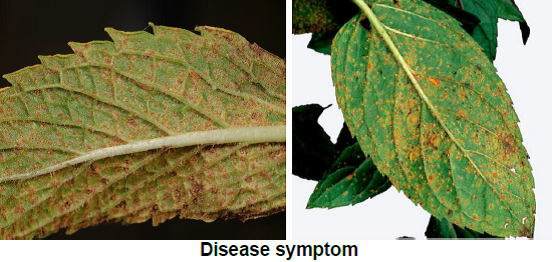
Survival and spread:
- When the orange spore pustules mature and break open in June or July, the spores are spread to other plants by the wind.
- The fungus enters the plant through the leaves lNewly infected plants seldom show symptoms until the following spring.
Favorable conditions:
- Dry weather with high relative humidity
- Pathogens overwinter on mint stubble & on wild mint.
- It spreads through propagation material and air
Verticillium wilt
Disease symptoms:
- Symptoms first appear in the foliage at the top of the plant.
- Symptomatic upper leaves are sickle-shaped and initially chlorotic or red, soon becoming necrotic.
- Premature defoliation and death of the plant can result.
- Vascular discoloration in stems and roots may be observed and diseased plants are often stunted.

Survival and spread:
- The transport of infected planting materials can transmit the pathogen to long distances.
- Spread of the pathogen occurs primarily by soil and movement of soil and water.
Favourable conditions:
- Verticillium wilt is favored by moist soils and a temperature range of 21-27° C.
- Micro-sclerotia are stimulated to germinate by root exudates of host plants
Anthracnose
Disease symptoms:
- Mint anthracnose, also known as "leopard spot".
- The fungus causes small, sunken brown spots to appear on the lower leaves and stems. These spots enlarge to form oval lesions with light gray centers and reddish-brown borders, and may unite.
- Mint anthracnose may cause defoliation and cankers, which may lead to splitting of the stem.
- Heavily-infected plants are weakened and oil yields are reduced.
- Anthracnose may become severe during wet seasons when the mint foliage is wet for long periods.
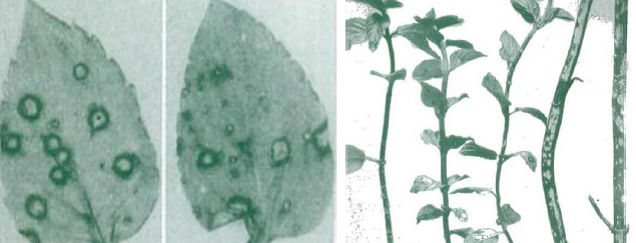
Survival and spread:
- Conidia are rain-splashed from overwintering infected plant in the spring and throughout the summer to new growth.
Favourable conditions:
- Infection requires three to twelve hours of wetness.
Powdery mildew
Disease symptoms:
- Powdery white patches are developed on the upper and lower surfaces of the leaves and stems.
- Under favourable conditions, the disease causes severe lossess. It also reduces the oil
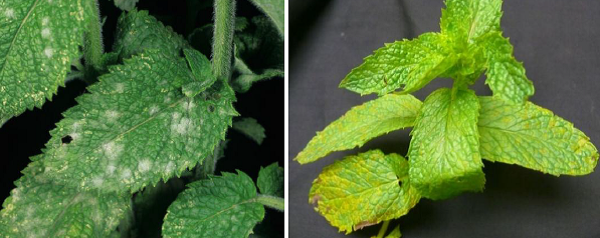
Survival and spread:
- Resting spores is responsible for primary spread and airborne spores for secondary spread.
Favourable conditions:
- Disease becomes severe when weather is dry and air circulation is poor (warm and humid weather)
Black Stem Rot
Disease symptoms:
- Black stem rot is considered a moderate to serious problem in mint production.
- The fungus is most active during periods of cool and wet weather.
- Symptoms of infection include dark brown or black cankers on stems.
- Cankers may girdle the stem and cause plant parts above the infection to wilt and die.
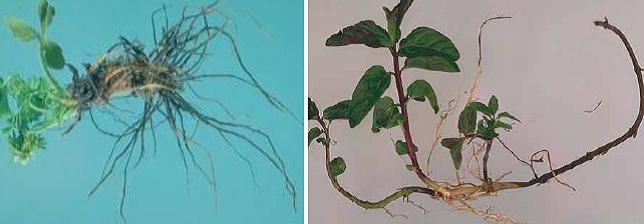
Survival and spread:
- Pathogen survive in soil and on plant tissue for many years by producing small (1 to 3- mm diameter), irregular-shaped, brown to black sclerotia.
Favourable conditions:
Disease become more severe in soils that are moderately wet and a temperature range of 15-25°C
Stem and stolon canker
Disease symptoms:
- Roots and stolon have brown or black progressively rotting areas. Plant stand may be greatly reduced.
Survival and spread:
- Pathogen survive on crop debris and in soil as black to brownish resting structures (sclerotia) or as resting fungal mycelium.
Favourable conditions:
- Warm soil with high humidity is favorable for disease development.
- Temperatures between 26-32°C, soil moisture between 30-60% and soil pH above 6.6 are conducive for disease development.
Septoria leaf spot
Disease symptom:
- Septoria leaf spots are dark brown/black, up to 3mm (⅛in) diameter and angular in shape (being constricted between leaf veins).
- Spores are sometimes visible within leaf spots on the underside of the leaf.
Survival and spread:
- The fungus survive in plant debris and on weeds .
Favourable conditions:
- Moist (more than 70% relative humidity) coupled with warm weather and intermittent rains favours disease development.
Disease cycles:
Mint rust
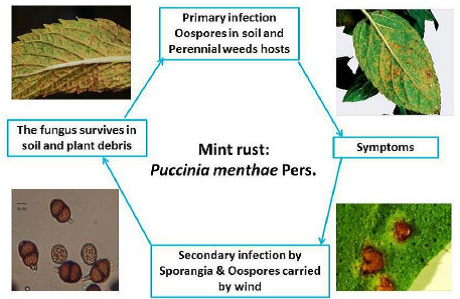
Verticillium wilt
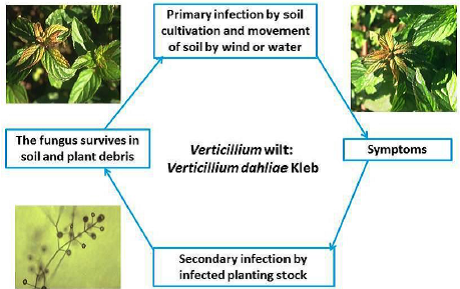
Anthracnose
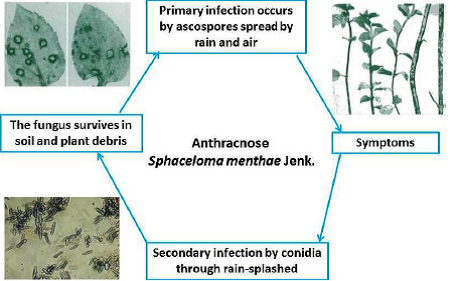
Stem and stolon canker
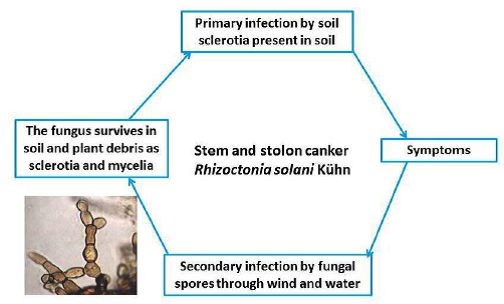
Powdery Mildew
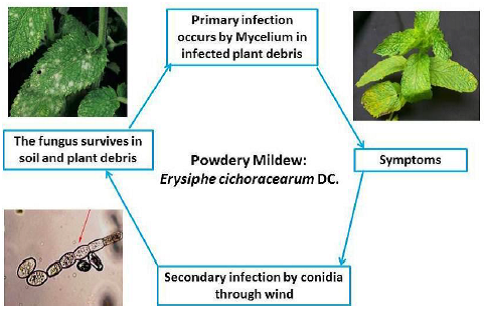
Black Stem Rot
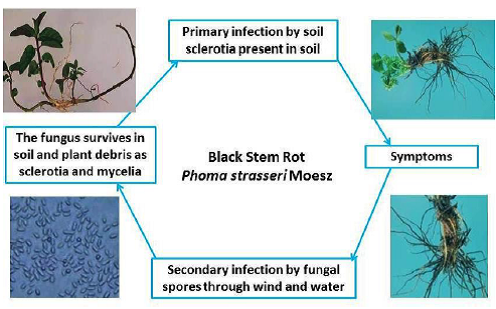
IPM for Mint
To know the IPM practices for Mint, click here.
Source: NIPHM; Directorate of Plant Protection, Quarantine & Storage
Last Modified : 3/30/2020
This topic provides information about Lablab bean ...
This topic covers information about Amla Diseases ...
This topic provides information about Apricot-Desc...
This topic covers the Information related to Disea...
